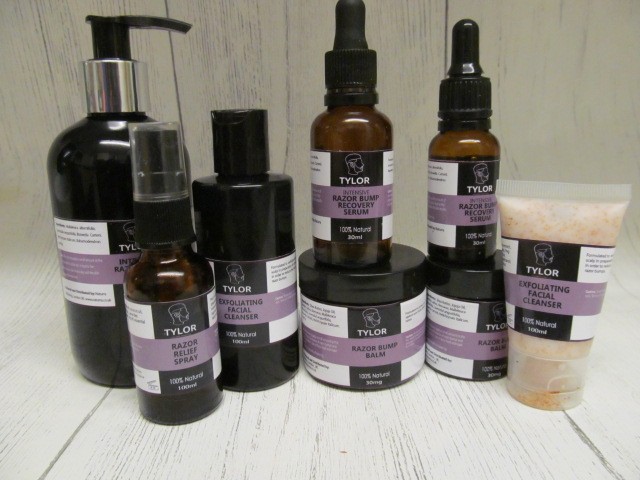
Tylor Made – Grooming Perfection for Black Males
What Every Black Man Should Know about Getting a Close Shave and Preventing and Reducing Razor Bumps
MOST MEN HAVE SUFFERED from ingrown hairs or razor bumps at some point. For some, it can become more server. Men of African descent suffer more than most because black men hairs that are predominantly curly and wiry. Saved hair follicles tend to curve back and re-enter the skin as they grow, causing irritation and razor bumps. Ingrown hairs can also occur when hair doesn’t fully emerge from the skin’s surface and instead sits coiled underneath, leading to bumps and possible infection.
We haven’t forgotten those who don’t shave. Check out our Woodman Beard Oil, to keep your main, healthy, soft, manageable and kissable.
| This reoccurring condition causes major discomfort in the beard and neck area and can affect black men for years and years at a time.
Following these simple men’s grooming techniques can keep African-American skin smooth and refreshed, and correctly treat ingrown hairs. • Always use a sharp razor blade and discard old blades after 4-5 uses. Dull blades force black men to go over the same area of skin again and again, increasing the chances of irritation and improperly cutting hair. This goes for electric razors, as well: Replace the blades frequently. • Reduce your number of shaves. Giving the skin time to heal will allow hairs to grow straight through the skin’s surface, without forcing too-short hairs back into the skin. Frequent shaving too close to the skin will trap hairs inside the follicles. • Exfoliate! Exfoliating with a gentle scrub like “Tylor Exfoliating Facial Cleanser” twice a week to remove the top layer of dead cells and allows hairs to grow out more easily. It also helps soften skin, clears pores and evens out patchy skin tones. • Consider a single-blade razor or a DE razor. Those who already suffer from razor bumps are discouraged from using triple or quadruple blade razor systems. The closer the shave, the worse the razor bumps will be.” • Always shave in the direction of hair growth. While shaving upward seems to give a closer shave, shaving in the hair’s direction reduces irritation and the likelihood of hairs growing back into the skin. Don’t pull the skin taut when shaving since this can also cause ingrown hairs to form. • Soften hairs before shaving using “Tylor Pre-shave oil” on your hair or beard area before applying professional-grade highly-lubricating shave cream. Allow it to sit on the face for a minute or two to completely coat hairs before shaving. • Follow a shave with an after-shave solution that contains hydrating ingredients like aloe, witch hazel and tea tree extract like ”Razor Relief Spray” to cut down on redness and discomfort. Stay away from products that contain alcohol since this can dry skin out and provoke an ashy appearance in the black skin. • Resist the urge to pluck ingrown hairs out. A new hair will just grow again, and you’ll be facing the same exact problem. • Most importantly, take your time when shaving. Everyone’s been guilty of the 30-second shave on Monday morning, but shaving slowly and with care can dramatically reduce nicks, cuts, and abrasions that can aggravate razor bumps. • Severe Cases of Razor Bumps require more intensive products The following will help you deal with existing razor bumps “less than 2 years old”. Stage 1: ”Tylor intensive Razor Bump Remedy” – Apply twice daily to affected area using cotton buds. This is designed to deal with any infection to the area and reduce the size of razor bumps. Plan to do this for a minimum of two months. Stage 1a. Wash the area with the “Tylor Exfoliating Scrub”. Stage 2. Massage in the “Tylor Razor Bump Balm” using medium strokes to stimulate the blood supply in the area. If you find that you are suffering from severe cases of inflammation or razor bumps, talk to your doctor or dermatologist. |
| This research guidance has been informed by : MenScience |


